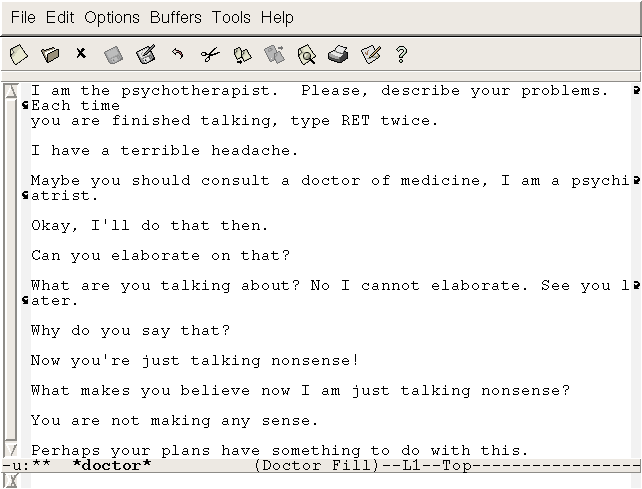Artificial Intelligence has always been one of the frontiers of computer science research, and it’s always important to take a look at the roots of this exciting field.
Lisp
With the death of AI pioneer John McCarthy at the age of 84 being announced, programmers all over the world are publicly mourning over social networks. In additon to founding artificial intelligence programs at both MIT and Stanford, his best known contribution to artificial intelligence research was the Lisp programming language. Lisp stood for “List Processsing,” and featured an incredibly elegant programming model. The main data structure in Lisp is, you guessed it, a list. Programmers work with lists of “atoms” grouped by parentheses. Computation was expressed by functions, which took arguments. The functions also happened to be lists. Without getting too technical, there was no real separation between the program and the data, and functions could be treated as lists and vice versa.
Lisp’s main innovation was the transition from computing based on numbers to computing based on symbols. It’s one of the oldest programming languages still in use.
The Turing Test
Alan Turing, a brilliant mathematician credited with helping break the German Enigma cryptography in World War II, also created the modern computing model with the Turing machine, a theoretical device that manipulated symbols on an imaginary tape according to a set of rules. Turing speculated it would be possible for a computer using simple rules to appear intelligent.
Turing’s solution was simple and elegant. If you put a computer and a human in different rooms and had them communicate solely by text, if a computer program really was intelligent, a person communicating with a computer or a human wouldn’t be able to tell the difference.
Tragically, as a gay man in England in the 1950s, he was hounded by the authorities and later comitted suicide, but both his Turing machine and Turing test laid the groundwork for modern computer science, and went on to influence…
ELIZA
ELIZA, a program designed to mimic a psychotherapist, showed that if a program was smart enough, people would think it was really intelligent. The program, designed by MIT researcher Joseph Weizenbaum, really just offered some canned responses to the answers users typed in, but the people who talked to the fake therapist thought it was a real person, something dubbed the “Eliza Effect.”
All of these innovations have made computers a little smarter, but making a truly intelligent system has been harder than the researchers imagined, but the results are still very impressive.
For a humorous interaction with Apple’s Siri, check out a duet between Apple’s AI assistant and a user, as well as Siri’s jokes.













